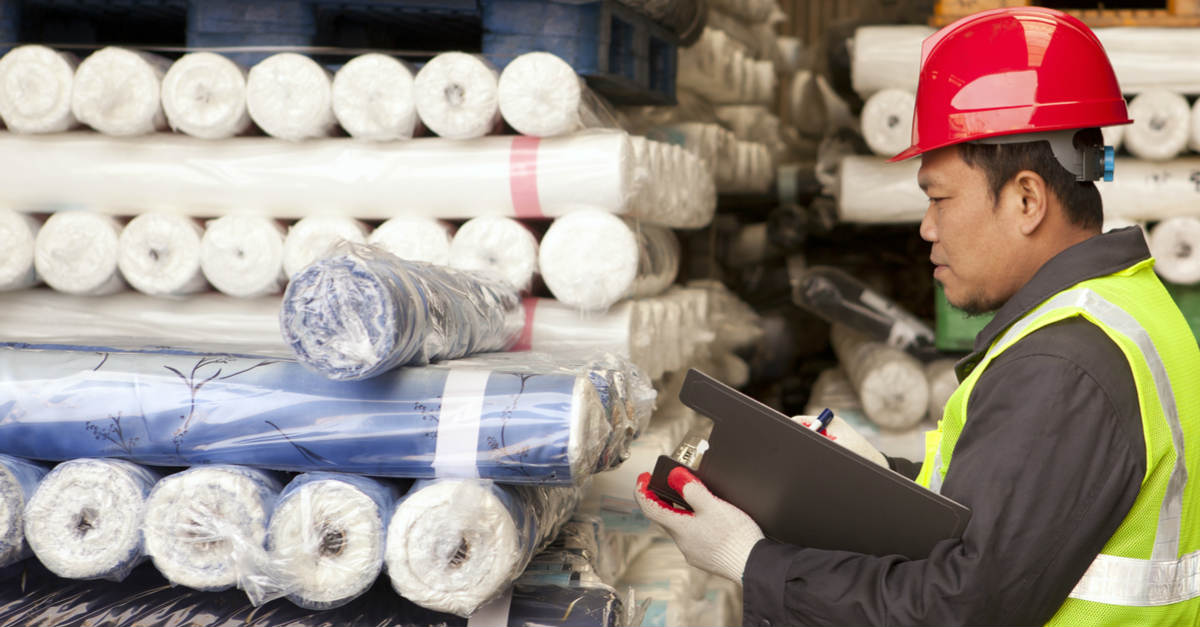
I can see four key product inspection solutions that importers should use for checking product quality before the goods are shipped out (remember, it is extremely hard to send a container of defective products back to China).
1. Inspections by an external inspector(s) in the factory
This is the most common type of quality inspection service. An inspector goes in the factory, takes some samples randomly (based on the AQL tables), and draws a conclusion about the whole batch.
It is typically performed by a third-party quality control agency, or by the buyer’s in-house QC staff.
In 80-90% of cases, it is conducted after production is finished. Depending on the report’s conclusion, the importer accepts or rejects the shipment.
Pros:
- The final random inspection is the “standard” way of checking quality. Suppliers are used to it.
- It is easy to set up and relatively inexpensive, even with many different suppliers in many different places.
Cons:
- The supplier might interfere in several ways: only showing a part of production (usually because they are late), bribing the inspector, or shipping other products if the inspector does not stay until the container is sealed.
- If the purchaser only sends an inspector after production is over, and if the inspection is failed, the supplier might refuse to rework the goods. He might wait until the purchaser is obliged to deliver his own customers’ orders.
2. Final inspections on a platform
This solution is popular with some large buyers, mostly from Japan.
Once the goods are completed, they are brought by the supplier to a platform — usually a forwarder warehouse. A certain number of cubic meters of storage is rented, as well as inspection room(s).
Platform inspections are conducted either on a randomly selected set of samples or on 100% of the goods.
Pros:
- Inspectors are more productive (no need to travel), and the goods can be shipped immediately after acceptance.
- No risk of supplier interference.
Cons:
- Suppliers often resent this solution. If the inspection is failed, they have to pay for the transport back to the factory, sort & re-work the goods and submit them again.
- Not suitable for small and irregular volumes.
Watch this video and learn how to improve management of quality from Chinese & Asian suppliers
3. Piece-by-piece inspection in the factory
If you want to check 100% of production (once it is over), piece by piece inspection in the factory might be a good idea.
You basically set up the final quality control line in the factory, with inspectors that are not on the manufacturer’s payroll.
Pros:
- The defect rate in the shipment is very close to zero after this 100% check.
- The manufacturer sees what is rejected and needs to re-work it.

Cons:
- Suitable only for large and regular volumes in one geographical area.
- Can be expensive, depending on the number of inspectors to station in the factory
4. Training & auditing internal inspector(s) in the factory
Training an internal inspector is ideal for the following situation: you purchase more than 30% of a factory’s output, you have been working with them for more than a year, you trust them very much, and you need better reporting on your production (both on quality and on timing).
Once an in-house inspector (on the factory’s payroll) has been trained and is dedicated to you, the key is to set up a reporting & auditing system. Then, the only ongoing cost is to audit his work (once every couple of weeks in the beginning, and less often if it runs fine).
Pros:
- Much lower cost than sending third-party inspectors
- In addition to controlling the products’ quality, the inspector can report on production status
Cons:
- You need a high level of cooperation from the manufacturer (no interference at all)
- There might be many complications if you purchase through a trading company
There are other solutions beyond just a product inspection
As Deming wrote, the ideal is to “cease dependence on inspection to achieve quality. Eliminate the need for massive inspection by building quality into the product in the first place.”
You can do it by improving the reliability of the manufacturing process, and by reducing risks during product design. But this is outside the scope of this article…
***
You may also find these related posts useful:
Quality Assurance In China Or Vietnam For Beginners
Download your free copy of Sofeast’s eBook and learn the common traps that new importers from China or Vietnam fall into, and how to avoid or overcome them in order to get the best possible production results. It also outlines a proven quality assurance strategy that you can follow in order to have better control over your product quality, covering:
- Finding Suitable Suppliers
- Defining your Requirements before Production Starts
- Don’t Skip the New Product Introduction Process
- Regular Quality Inspections (Trust but Verify)
- Tying Payments to Quality Approvals
Ready to get started? Hit the button below to get your copy now:




Renaud,
Thanks for mentioning the “platform option”. Our company PassageMaker (www.psschina.com) provides this type of service and you are right about the pros and cons. I am also happy to say that the service appeals to more and more companies, rather than just high quality Japanese buyers, because just about everybody is concerned about quality and product safety these days. The other benefit of a platform is the custom branding can be done at the same time the goods are inspected- without adding a lot of new costs. If it takes my line workers 10 seconds to pick up a product and inspect it, it doesn’t take any extra time to set it into a new custom box after the inspection… for example.
BTW, you mention that suppliers may not get onboard with using a platform at first. That is certainly the case if the supplier is trying to hide defects, because as you point out, a random inspection is not a 100% inspection like the kind that takes place at a platform. We have found that if suppliers are paid as soon as the goods pass inspection at the platform, they start to see the value in “doing it right the first time” and defect rates go down quickly.
Mike,
Thanks a lot for telling us about your experience with final inspections on a platform. Very interesting.
Thanks a lot for the most informative and educational website in this subject (QC Inspection ) . I am really happy to be here , thank you twice .
M.Z.,
Thanks a lot for the nice comment.
Thank-you for the information. My company is currently in the process of having steel castings produced in China and I have the daunting task of building a QA/QC program.
Dear Renaud,
I’m currently working at the telco company at a QA dept and very often to buy Device with huge quantity in China, the products is Modem, Router, Smartphone and Tablets,
How many sample do we need to check for quality inspection during production process? Using table GII sample count by using 1 day production capacity? or hourly its ok?
How many sample do we need to check for quality inspection before shipment?
Let say during production sampling we found a very many major defect that is not acceptable quantity, is it appropriate to hold the production on the supplier site? Cause i don’t believe in rework thing, makes the appearance of the product looks bad, dirty scratch or dent.
If you inspect during production (as opposed to the end of production, when 100% is finished), I would suggest not to follow the AQL tables. Just check what you can, and draw conclusions (and recommendations) from there. If there are many defects, ask the manufacturer to sort them out before the final inspection.
For final inspections, you should probably follow the AQL tables. See https://www.qualityinspection.org/what-is-the-aql/